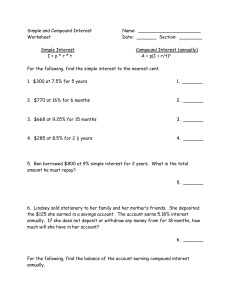Post test HW
advertisement
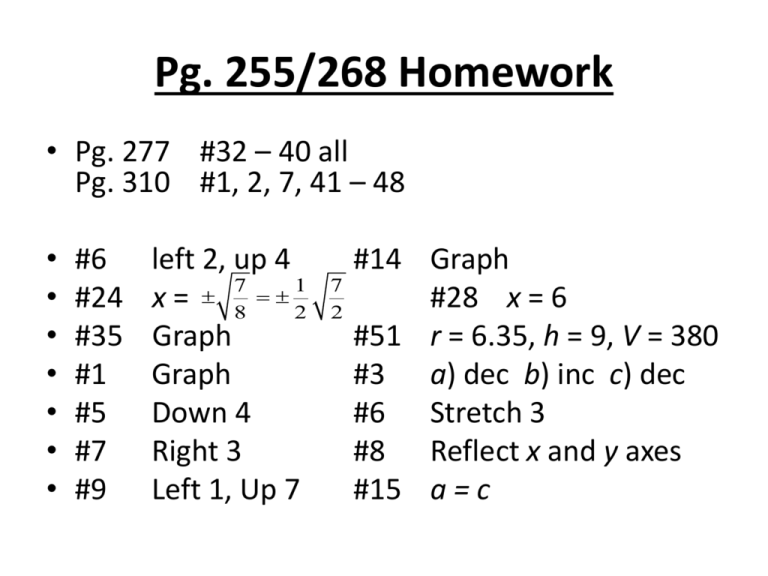
Pg. 255/268 Homework • Pg. 277 #32 – 40 all Pg. 310 #1, 2, 7, 41 – 48 • • • • • • • #6 #24 #35 #1 #5 #7 #9 left 2, up 4 7 1 x= 8 2 Graph Graph Down 4 Right 3 Left 1, Up 7 7 2 #14 Graph #28 x = 6 #51 r = 6.35, h = 9, V = 380 #3 a) dec b) inc c) dec #6 Stretch 3 #8 Reflect x and y axes #15 a = c 5.1 Exponential Functions Life Span Problems • The formula for Life Span problems is similar to the continuous growth/decay equation using e. • Population: 𝑆 = 𝑃𝑒 𝑟𝑡 • Life Span: 𝑦=𝑃 𝑎 𝑡 𝑑 • Suppose the half-life of a certain radioactive substance is 20 days and there are 5g present initially. – Write an equation to represent the situation. – Draw a complete graph. – Find when there will be less than 1g of the substance remaining. 5.2 Simple and Compound Interest Compound Interest Example • Compound Interest is when financial institutions pay interest on the interest. (Yay… more money!) • Sally invests $500 at 7% interest compounded annually. Find the value of the investment after 10 years. • Suppose P dollars are invested at an interest rate r, then the compound interest formula for the total amount S after n interest periods is: • How much should Sally invested at 6.25% compounded semi-annually in order to have an investment of $1,500 after 5 years? 𝑟 𝑆 =𝑃 1+ 𝑛 𝑛𝑡 5.2 Simple and Compound Interest Compound Interest • Sally invests $1000 at 8%. Find the value of the investment after one year when it is compounded – – – – – – – Annually Quarterly Monthly Weekly Daily Hourly Continuously Continuous Interest • If P dollars are invested at an APR, r, (in decimal form) and compounded continuously, then the value of the investment after t years is given by: S = Pert

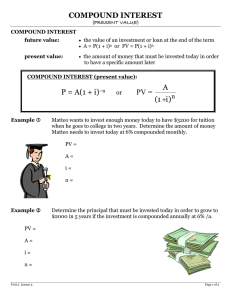
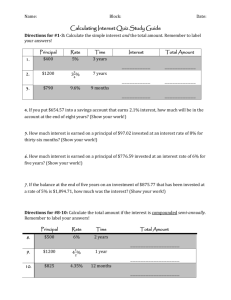
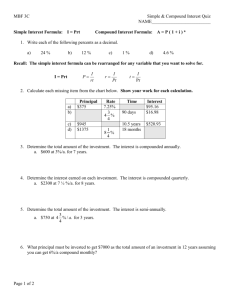
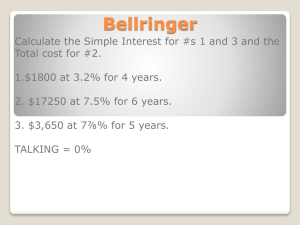
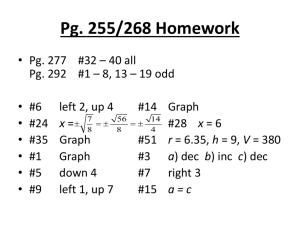


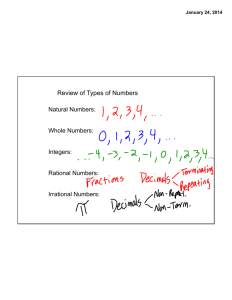
![Practice Quiz Compound Interest [with answers]](http://s3.studylib.net/store/data/008331665_1-e5f9ad7c540d78db3115f167e25be91a-300x300.png)

